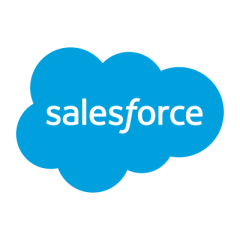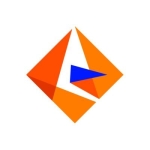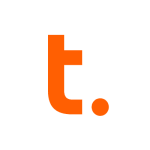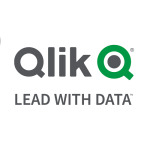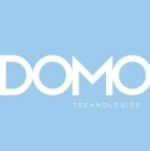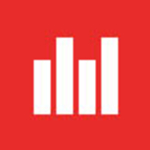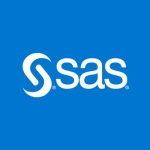What is most valuable?
There are so many smart features baked into this product, it's hard to even rank them. I think what makes Tableau stand out over other software I've used is that it doesn't start with a visualization, then pump numbers into it: It starts with numbers, and then represents them as shapes on a canvas. The result is more akin to an artist painting on a canvas using numbers as the brushes and colors. As a result, it is the flexibility of the mark types, and how they interact with data types, that make this product stand out. Someone who wants to create a visualization need only imagine the intended output, then use the numbers to create the marks in that output.
A non-trivial example is that a number can be considered continuous or discrete, depending on the context. In some cases, you need to use the same number both ways in the same visualization (histogram, anyone?). The flexibility to specify how a number is interpreted in terms of how an axis/mark will be generated is visualization at a more fundamental level. It is a completely different experience than pointing Excel at a highly manipulated table to generate an inflexibly structured chart type.
How has it helped my organization?
The use case has been different from one organization to another. In most cases, the initial buy-in and value-add is at the analyst level. The freedom to calculate, then derive, then iterate - that never-ending cycle every analyst out there knows well - to do that, do it quickly, and in a way that is remarkably beautiful, is every analyst's wet dream. Even if an analyst never shares visualizations they create during the course of a project, the tool makes them better and faster at deriving insights of their own by virtue of everything data visualization is meant to do for humans - improve understanding.
For organizations that have the capital to take it further, beginning to push out the interactivity, reports, and resulting insights up the ladders, or out the branches of the organization, with buy-in to the more-expensive server options - well, those organizations wield a much greater force. The ability for decision makers whose decisions affect many lives, higher in an organization, or the net effect of decision makers who make thousands of small decisions every day - Tableau, used well, makes it easier to make higher quality decisions faster. The same can be said of any technology used well, to be fair, but Tableau’s beauty and speed to insight is unmatched.
In my case, I have also used Tableau as a report prototyping platform. Designing and implementing is so fast in Tableau, when working with business stakeholders who may not know the specifics of what they want, and will ultimately be using whatever reporting platform their corporate standard is on - Tableau is great for iterating through version after version, change after change, until a report is built that is exactly what the business needs. Then, specific requirements can be written for a report builder using that corporate technology - which is invariably slower to iterate on. By moving the prototyping and proof of concept to Tableau, the development hours and agile lifecycle can be decimated.
What needs improvement?
Connectivity seems to be a sticky point, but it's also a hard nut to crack at the level that I would love to see. Tableau is fast, razor sharp on the whole - WHEN you use an extract. The problem is querying the data to fill the extract is only as fast as the source system. The result is that when you start working with large volumes of data, you often must start finding creative ways to improve the performance of your query. Here's where it gets tricky. I almost exclusively use SQL Server as a source. When I want to create custom data for an analysis (or some ongoing report with complexity), I have the latitude to write custom SQL. The problem is that in order for Tableau to retrieve metadata, the query sent to the server arrives as a subquery like:
SELECT * from ([your custom SQL here]) x
Because of this, I can't use a host of very useful T-SQL techniques that improve query performance or clarity. No CTEs, no temp tables, etc. In some organizations, the argument is that if you want that kind of complexity, wrap it up in a stored procedure and call the procedure (which, yes, you can call sprocs in Tableau), but that comes with its own disadvantages, which I won't get into too much here. But that is not to mention not all report writers or analysts have the privileges to create or alter sprocs on a server within their organization.
In any case, depending on how much control you have over your database as a Tableau user, as well as the nature of the data you are pulling, you may find yourself having to be very creative just to get data TO tableau to create larger extracts.
For how long have I used the solution?
I started using Tableau in version 7, around 2012.
Buyer's Guide
Tableau
June 2025
Learn what your peers think about Tableau. Get advice and tips from experienced pros sharing their opinions. Updated: June 2025.
861,524 professionals have used our research since 2012.
What was my experience with deployment of the solution?
Desktop deployment is a cinch. Server, I had no involvement with setting up.
How are customer service and support?
The user community is extremely vibrant and engaged, especially for how (relatively) young the product is, so I have only had two occasions to call support. In both cases, they were resoundingly helpful and responsive.
Which solution did I use previously and why did I switch?
Back in 2012, we evaluated it against QlikView and MicroStrategy. MicroStrategy was more complex than our organization needed, and Tableau won out on ease of use and feature set, but I don't really remember the grittier details.
How was the initial setup?
Initial setup was simple and fast for both Desktop and Server, but, as I mentioned, I was not involved in Server setup.
What about the implementation team?
In 2012, we used an in-house team. I was not deeply involved at the time, so I don't have much implementation advice. For a larger organization, Tableau has created a consulting arm specifically for implementation, and having read a few of the white papers put out by them, I would highly recommend using them for a large implementation.
What was our ROI?
ROI can only be attained by use, so the ROI will be a function of adoption, not features of the product. Make sure you have the culture and an execution strategy to get people engaged and using it. Compared to other BI software, it's very easy to use, but not everyone will start using it just because there is a new icon on their desktop. Figure out adoption. Focus on it.
If people are using it, the ROI will be there, but if you spend 6-7 figures on an enterprise feature set and nobody uses it, it will have been wasted.
For the prototyping situation described earlier - one complex dashboard built from scratch then implemented in SSRS - the saved development time alone paid for the Desktop license.
What other advice do I have?
This is a visualization software. Make sure you are looking at total cost of ownership in the context of other BI infrastructure that is still needed to get good ROI. Management of data at an enterprise level is more than just visualization, and if all of those things are in place, this product shines. If you have dirty data, slow resources, governance problems, etc., this software is not designed to solve those problems, and those problems will stunt the usefulness you get out of Tableau.
Disclosure: My company does not have a business relationship with this vendor other than being a customer.

